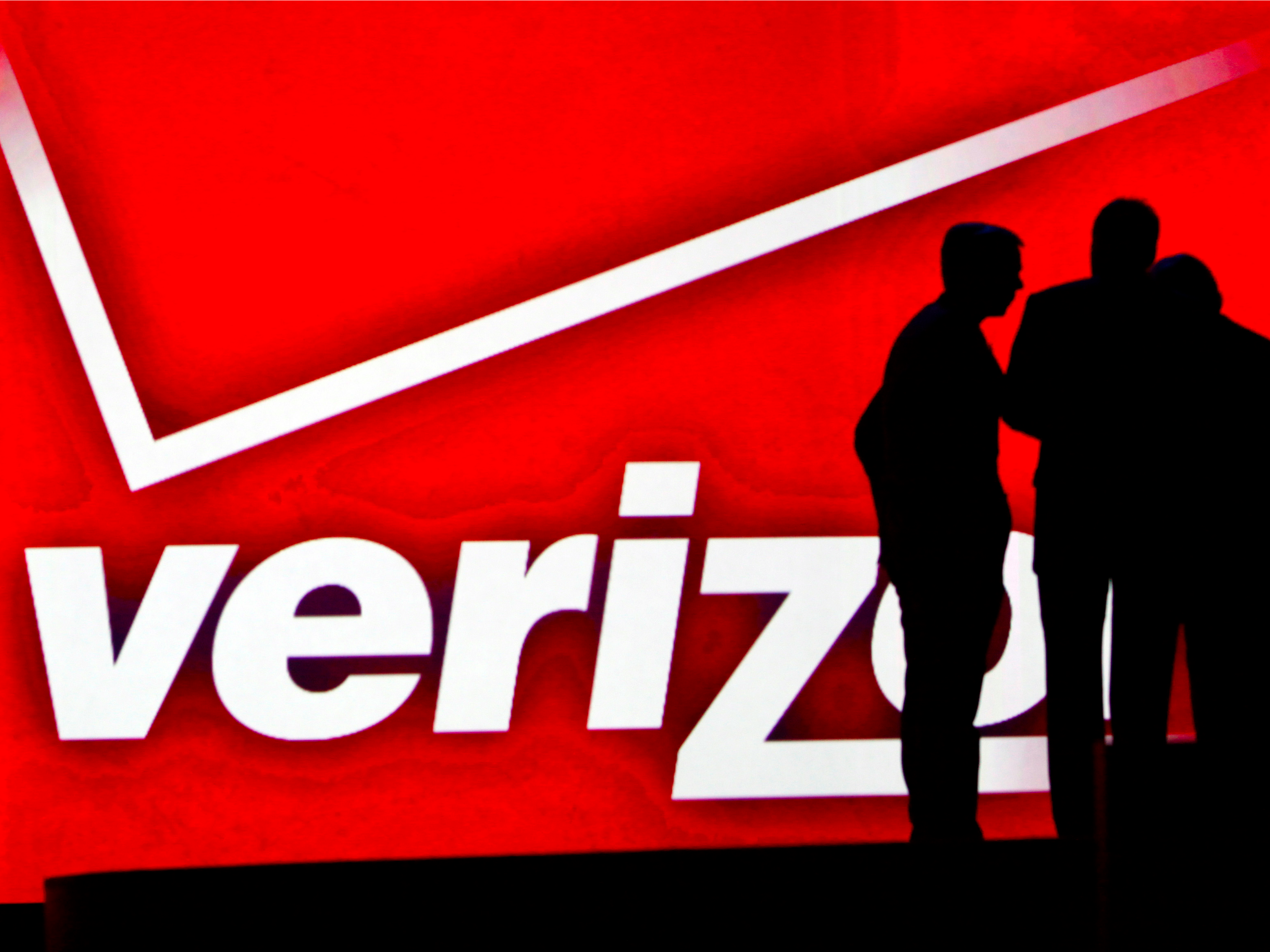Everything old is new again, and unlimited data plans are back in vogue.
With Verizon returning to the fray this week, all four of the major mobile carriers in the US now advertise unlimited offerings.
But, per usual, each of those plans comes with a significant slate of caveats.
So to help you sort through the fine print, here’s a quick rundown of how this revived set of unlimited plans match up.
The big caveat: No “unlimited” plan is really unlimited.

None of these plans allows you to use an endless amount of LTE data across the board with no penalties. Instead, each carrier warns that your speeds may be slowed if you go over a certain amount of data per month and live in an area of congestion. How this “prioritization” is determined isn’t totally clear. Each plan also limits what you can do with that data when it comes to things like mobile hotspots, international usage, and the like.
Being prioritized isn't exactly the same as being throttled - it's still possible to get LTE speeds once you get past each carrier's warning point. The amounts of data you can use without risk are fairly generous, too, and you do get unlimited talk and text with each plan.
But wireless carriers continue to use the word "unlimited" in a misleading way. This only gets worse when you look at the restrictions imposed on unlimited plans from MVNOs like Boost Mobile and Cricket Wireless, which is why we haven't included them in this comparison.
Also worth clarifying: None of the advertised rates below include device subsidies. Remember that if you buy a phone from carrier and pay for it in monthly installments, that fee will be added to the cost of the plans below.
The other caveat: Not all networks are created equal.

The value of any "unlimited" plan becomes less worth it if you're only getting shoddy internet. Unfortunately, a big chunk of the country still suffers from mediocre mobile coverage.
It's hard to give exact metrics on how carriers' current networks compare, but a recent study from mobile analytics firm OpenSignal gives a relevant picture: Verizon and T-Mobile are neck and neck in terms of fastest speeds, but Verizon's LTE network is slightly more available. In general, Verizon is consistently near the top, T-Mobile is seen as improving, AT&T is either in second or third, and Sprint typically brings up the rear.
If you opt for a prepaid carrier, however, you usually have to deal with slower speeds. Cricket Wireless has an unlimited plan for $65 a month, for instance, but its parent AT&T caps Cricket download speeds at a lower-than-average 8Mbps. Again, we've omitted them as a result.
Verizon

How much does it cost? $80 a month for one smartphone line. Beyond that, $140 a month for two lines, $162 a month for three lines, and $180 a month for four lines. For plans with multiple lines, you can use data on both smartphones and tablets.
These rates do not include taxes and regulatory fees, which vary by region, so your bill will be a few bucks higher than what's advertised. You also need to enroll in auto-pay billing to get these prices - otherwise, a single line is $5 more expensive, while lines two through four are $10 more expensive.
It's important to note that Verizon has described this as an "introductory" plan, so it's not clear if the advertised rates will always stay in place going forward.
How much LTE data do you actually get? Verizon warns that each line may be slowed in areas of congestion once it uses more than 22 GB of LTE data in a given month.
Can you stream HD video? Yes. It doesn't appear to be capped at 720p, either - Verizon says that it doesn't "manipulate the data" it sends in any way.
How about LTE mobile hotspot data? You get 10 GB of LTE mobile hotspot data a month. Verizon says mobile hotspot speeds will be reduced to 3G levels after that.
Any other details worth knowing? Verizon still offers other, less expensive plans on its website, which range from $35 a month for 2GB of LTE data to $70 a month for 8GB of LTE data. There are higher-bucket tiers beyond that, but you have to call the carrier or visit a store to activate them.
T-Mobile One

How much does it cost? $70 a month for one line. Beyond that, $120 a month for two lines, $140 a month for three lines, and $160 a month for four lines.
These rates do include additional taxes and fees, so you pay what's advertised. You do need to enroll in auto-pay billing to get these rates, though - otherwise, everything is $5 more expensive.
T-Mobile will run a limited-time promotion starting February 17 where two lines of service will cost $100 a month.
How much LTE data do you actually get? T-Mobile warns that each line may be slowed in areas of congestion once it uses more than 28 GB of LTE data in a given month.
Can you stream HD video?Starting February 17, yes. T-Mobile says you will have to activate the feature in the T-Mobile app or on the company's website, but that you'll only need to do so once every 30 days. It did not say if that video is capped at 720p or allowed to stream at higher resolutions, though.
Currently, T-Mobile requires you to pay extra in order to stream HD video, in the form of a $15-a-month T-Mobile One Plus add-on. It also forces you to activate HD video on the app or website everyday you want to use it.
How about LTE mobile hotspot data? Starting February 17, yes. T-Mobile says it will match Verizon and offer 10 GB of LTE mobile hotspot data a month. Once you surpass that, the carrier will throttle your mobile hotspot usage to 3G speeds for the pay period. Again, T-Mobile says you will have to manually activate the feature at least once every 30 days to use it.
Currently, T-Mobile requires you to pay extra to get unlimited LTE hotspot data, which becomes available if you buy its T-Mobile One Plus International add-on for $25 a month. It also warns that "on-device usage is prioritized over tethering usage, which may result in higher speeds for data used on device."
Today, the base One plan provides unlimited hotspot data, but at 512Kbps, which is closer to 3G speeds.
Any other details worth knowing? T-Mobile really wants to push all of its customers onto the One plan, so, while it does have cheaper plans, it buries them on its site, and pushes you to call the carrier to activate them.
If you stick with the One plan, the One Plus and One Plus International add-ons - which T-Mobile says will remain available after February 17 - bring other benefits. The One Plus add-on gives you unlimited WiFi through Gogo on flights from "US-based airlines," while the One Plus International add-on gives you unlimited international calling to various countries.
T-Mobile says you can add a tablet to your plan for an extra $20 a month, or a wearable for an extra $5 a month.
Sprint

How much does it cost? Normally, $60 a month for one line. Then $100 a month for two lines, $130 a month for three lines, and $160 a month for four lines.
As of this writing, though, Sprint is running a promotion where one line costs $50 a month for new customers, and anywhere from two to five lines costs $90 a month. Sprint says these prices will last until March 31, 2018, at which time you'll have to pay the regular price.
In any case, these rates do not include taxes and regulatory fees, which vary by region, so your bill will be a few bucks higher than what's advertised. You also need to enroll in auto-pay billing to get these prices - otherwise, everything is $5 more expensive.
How much LTE data do you actually get? Sprint warns that each line may be slowed in areas of congestion once it uses more than 23 GB of LTE data in a given month.
Can you stream HD video? No. Sprint caps all video streaming on its unlimited plan at a 480p resolution, which is less than HD.
It also limits music streams to 500Kbps, which is decent, and gaming streams to 2Mbps, which is slow.
How about LTE mobile hotspot data? You get 5GB of LTE mobile hotspot by default. Once that allotment is used up, Sprint throttles your hotspot data to 2G speeds.
Any other details worth knowing? Sprint offers additional plans beyond this unlimited offering, which range from $20 a month for 1GB of LTE data to $100 a month for 40 GB of LTE data. With the unlimited plan, Sprint says you can add a tablet for another $20 a month.
AT&T

How much does it cost? $100 a month for one line. Beyond that, $40 a month for each additional smartphone. Once you add your fourth line, AT&T will gradually reimburse that line through monthly credits after you pay for two billing cycles. (Telecoms!)
To even be eligible for AT&T's unlimited plan, though, you need to subscribe to either of one of its DirecTV or U-Verse services. That will add at least another $50 to your bill each month, but you'll get TV service along the way.
How much LTE data do you actually get? AT&T warns that each line may be slowed in areas of congestion once it uses more than 22 GB of LTE data in a given month.
Can you stream HD video? Yes, but AT&T turns it off by default. To activate it, you have to disable the carrier's Stream Saver setting in the myAT&T app or AT&T's website. Once it's off, it will at least stay that way until you activate it again.
How about LTE mobile hotspot data? Not for phones or tablets. AT&T says "tethering and use of your device as a mobile hotspot are not allowed" at all with its unlimited plan - unless you use it in select connected cars.
Any other details worth knowing? As you might expect, AT&T does not advertise its unlimited plan as heavily as the other carrier do theirs. The carrier more readily promotes its tiered plans, which range from $50 a month for 1GB of LTE data to $470 a month for 100GB of data.
You can add a tablet to the unlimited plan for $40 a month, or a wearable for $10 a month.
So which should I buy?

As always, it depends. Not everyone needs an unlimited plan, either.
But now that it is clearing up concerns with HD video streaming and LTE hotspot data, T-Mobile appears to have the best overall value. Its network is strong, it has a variety of bonus features, and it's the second-cheapest option. We'll update if it's thrown in any more hidden caveats on February 17, though.
That said, Verizon still covers the widest swath of the nation, and its network is either the fastest or joint-fastest, depending on who you ask. T-Mobile's latest moves have undercut it a bit, but at $80 a month, it's not that much more expensive than the One plan.
If you just want the cheapest unlimited plan available, there's Sprint, but its network has lagged behind the competition for some time now, and the video throttling is rough. Still, if you're in an area where coverage isn't awful, five lines for $90 a month isn't a bad deal.
AT&T's unlimited plan, meanwhile, is a non-starter for those who don't want DirecTV. With T-Mobile eating away at its subscriber base and network standing, it wouldn't be a surprise to see Ma Bell introduce a more competitive offering in the near future.

